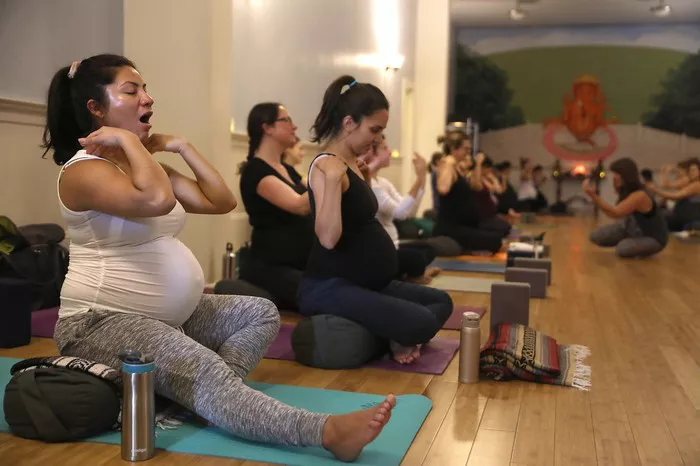In the hustle and bustle of modern life, finding moments of peace and clarity can seem like an elusive dream. However, amidst the chaos, Raja Yoga meditation offers a pathway to inner tranquility and self-realization. Rooted in ancient Indian philosophy, Raja Yoga is a holistic approach to meditation that encompasses physical, mental, and spiritual practices. By integrating mindfulness, ethical principles, and deep introspection, Raja Yoga empowers individuals to cultivate a harmonious relationship between mind, body, and soul. In this comprehensive guide, we explore the principles and techniques of Raja Yoga meditation, providing precise answers to help you embark on a transformative journey towards inner peace.
Understanding Raja Yoga: The Path to Self-Mastery
Raja Yoga, also known as the “Royal Path,” is one of the classical forms of yoga outlined in the Yoga Sutras of Patanjali. Unlike some other types of yoga that primarily focus on physical postures (asanas) or breath control (pranayama), Raja Yoga emphasizes the control and mastery of the mind. At its core, Raja Yoga is about harnessing the power of concentration and meditation to quiet the fluctuations of the mind and attain self-realization.
The Eight Limbs of Raja Yoga
Central to the practice of Raja Yoga are the Eight Limbs, or Ashtanga, as outlined by Patanjali in the Yoga Sutras. These limbs provide a comprehensive framework for spiritual growth and self-discipline. Let’s explore each limb and its significance:
1. Yama (Ethical Restraints): Yama encompasses moral principles that guide our interactions with others and the world around us. It includes principles such as ahimsa (non-violence), satya (truthfulness), asteya (non-stealing), brahmacharya (celibacy or moderation), and aparigraha (non-possessiveness).
2. Niyama (Observances): Niyama refers to personal observances or disciplines that foster self-awareness and inner purity. This limb includes practices such as saucha (cleanliness), santosha (contentment), tapas (austerity), svadhyaya (self-study), and Ishvara pranidhana (surrender to a higher power).
3. Asana (Physical Postures): While Raja Yoga primarily focuses on mental practices, the practice of physical postures is considered important for promoting physical health and vitality. Asanas help prepare the body for long periods of meditation by promoting strength, flexibility, and balance.
4. Pranayama (Breath Control): Pranayama involves the regulation and control of breath to balance the flow of prana, or life force energy, within the body. By practicing various breathing techniques, practitioners can calm the mind, increase vitality, and enhance concentration.
5. Pratyahara (Withdrawal of the Senses): Pratyahara is the practice of withdrawing the senses from external distractions and turning inward. By disengaging from the stimuli of the external world, practitioners can focus their attention on the inner realm of consciousness.
6. Dharana (Concentration): Dharana involves the cultivation of single-pointed concentration, where the mind is focused on a specific object or point of meditation. Through sustained concentration, practitioners develop mental stability and clarity.
7. Dhyana (Meditation): Dhyana is the uninterrupted flow of awareness towards the object of meditation. In this state, the practitioner experiences a deep sense of inner absorption and tranquility, transcending the ordinary fluctuations of the mind.
8. Samadhi (Union with the Divine): Samadhi is the ultimate goal of Raja Yoga, where the practitioner experiences a profound state of oneness and unity with the Divine. In this state of transcendence, the individual realizes their true nature and attains liberation (moksha) from the cycle of birth and death.
Practical Techniques for Raja Yoga Meditation
Now that we have explored the philosophical framework of Raja Yoga, let’s delve into practical techniques that can help you cultivate a regular meditation practice and experience its profound benefits:
1. Set Aside Dedicated Time: Find a quiet and comfortable space where you can practice meditation without interruptions. Set aside a specific time each day for your meditation practice, ideally during the early morning or evening when the mind is naturally calmer.
2. Establish a Posture: Sit in a comfortable and stable posture with your spine erect and shoulders relaxed. You can sit cross-legged on the floor or use a cushion to support your hips. Alternatively, you can sit on a chair with your feet flat on the ground.
3. Focus on the Breath: Begin your meditation by bringing your awareness to the natural rhythm of your breath. Notice the sensation of the breath as it enters and leaves your nostrils or feel the rise and fall of your abdomen with each breath.
4. Practice Mindfulness: As you continue to breathe deeply and evenly, gently redirect your attention to the present moment whenever your mind starts to wander. Observe any thoughts, sensations, or emotions that arise without judgment, and then gently guide your focus back to the breath.
5. Use a Mantra or Point of Focus: Some practitioners find it helpful to use a mantra, or sacred sound, as a focal point for meditation. Repeat a chosen mantra silently or aloud with each breath to quiet the mind and deepen your concentration. Alternatively, you can focus your attention on a visual object, such as a candle flame or an image of a deity.
6. Cultivate Inner Stillness: As you continue to meditate, allow yourself to sink into a state of inner stillness and silence. Let go of any mental chatter or distractions, and surrender to the natural flow of consciousness. With practice, you will learn to access deeper states of relaxation and clarity.
7. Extend Loving-Kindness: Raja Yoga meditation also involves cultivating feelings of love, compassion, and kindness towards oneself and others. As you meditate, visualize sending waves of loving-kindness to yourself, your loved ones, and all beings in the universe. This practice can help dissolve barriers and cultivate a sense of interconnectedness and harmony.
8. End with Gratitude: As you conclude your meditation practice, take a moment to express gratitude for the opportunity to cultivate inner peace and self-awareness. Reflect on the benefits of your practice and carry the sense of peace and clarity into your daily life.
Overcoming Challenges in Raja Yoga Meditation
While Raja Yoga meditation offers profound benefits, it is natural to encounter challenges along the way. Here are some common obstacles and strategies for overcoming them:
1. Restlessness and Distractions: It is common for the mind to wander during meditation, especially in the beginning. If you find yourself feeling restless or distracted, gently guide your attention back to the present moment without judgment. Remember that each moment of awareness is a step towards greater inner peace.
2. Physical Discomfort: Sitting still for extended periods of time may cause physical discomfort or stiffness. Experiment with different sitting positions or use props such as cushions or blankets to support your body. If necessary, you can also practice walking meditation or yoga asanas to release tension and promote relaxation.
3. Resistance to Practice: There may be times when you feel resistant to practicing meditation, especially when faced with busy schedules or challenging emotions. In such moments, remind yourself of the profound benefits of meditation and the transformative power it holds. Approach your practice with gentleness and compassion, acknowledging that resistance is a natural part of the journey. Start with shorter meditation sessions and gradually increase the duration as you build consistency and resilience.
4. Expectations and Impatience: It’s easy to become discouraged when progress in meditation feels slow or non-linear. Release expectations of achieving specific outcomes and instead focus on the process itself. Understand that meditation is a lifelong journey, and every moment of practice contributes to your growth and evolution. Cultivate patience and trust in the unfolding of your spiritual path.
5. Overcoming Egoic Patterns: As you delve deeper into meditation, you may encounter layers of conditioning and egoic patterns that arise to the surface. Approach these challenges with curiosity and self-inquiry, recognizing them as opportunities for growth and self-awareness. Cultivate a sense of detachment from these patterns, observing them with compassion and without identification.
6. Seeking Guidance and Support: Don’t hesitate to seek guidance and support from experienced meditation teachers or spiritual mentors. Joining a meditation group or attending retreats can provide valuable opportunities for learning, inspiration, and community. Surround yourself with like-minded individuals who support your spiritual journey and offer encouragement along the way.
7. Staying Consistent: Consistency is key to reaping the full benefits of Raja Yoga meditation. Create a daily routine that incorporates meditation as a non-negotiable aspect of your self-care practice. Set realistic goals and hold yourself accountable, knowing that even a few minutes of meditation each day can make a significant difference in your life.
By navigating these challenges with patience, perseverance, and self-awareness, you can deepen your practice of Raja Yoga meditation and experience profound transformation on all levels of being.
Conclusion
Raja Yoga meditation offers a profound path to self-discovery, inner peace, and spiritual awakening. By embracing the Eight Limbs of Raja Yoga and integrating its principles into your daily life, you can cultivate greater self-awareness, inner harmony, and connection with the Divine. As you embark on this transformative journey, remember that meditation is not a destination but a lifelong practice of self-exploration and growth. With dedication, patience, and an open heart, may you unlock the infinite potential that lies within and experience the boundless joy of living in alignment with your highest truth.

















